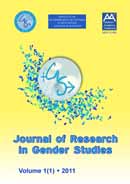De l’autre côté de la souffrance
De l’autre côté de la souffrance
Author(s): Najib RedouaneSubject(s): Gender Studies
Published by: Addleton Academic Publishers
Keywords: Rabea Bennouna; Morocco; lead years; Tazmamart; incarceration; struggle; denunciation; voicing of opinion
Summary/Abstract: Numerous are the publications that have shaken the forgetting of memories through hard and truthful testimonies which relate prison experiments in Moroccan prisons during the dark period of Moroccan history called the “lead years.” However, a variable has been seriously overlooked in this considerable production of tales of experiments that narrate the descent into hell of various prisoners who have experienced the unbearable and the intolerable, with an emphasis in their writings on a structure in three times, namely before, during and after prison. It is the traumatic reality that hits those hurt and destroyed beings “on the other side of the bars,” who, convicted to a special form of imprisonment, find out that their lives have been changed dramatically. In fact, the phenomenon of detention destabilizes not only prisoners, but also their relatives who must bend their lives to the unexpected, hard, scary and disturbing events. It is in this perspective that the writing of Rabea Bennouna, Tazmamart côté femme dresses a peculiar character since it brings the testimony of the partner, – wife and mother – wanting at all costs to support the link with the man who lives far from her, incarcerated as a result of the regicide’s attempt against King Hassan II in July 1971. This partner lives the other prison reality or the other side of pain, struggling and denouncing the abuse of an authoritarian power which, during decades, has derided at the rules of Human rights.
Journal: Journal of Research in Gender Studies
- Issue Year: 1/2011
- Issue No: 1
- Page Range: 103-121
- Page Count: 19
- Language: French
- Content File-PDF

